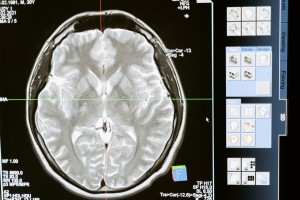
 Become a PowerPoint Guru by Dave Tracy
Become a PowerPoint Guru by Dave Tracy
Learn the methodologies, frameworks, and tricks used by Management Consultants to create executive presentations in the business world.

 Become a PowerPoint Guru by Dave Tracy
Become a PowerPoint Guru by Dave Tracy
 Business Transformation initiatives are typically undertaken to solve a pressing issue, bring about improved performance, or to serve customers better. A critical element of the success of such initiatives entails transforming the existing behaviors of the employees across the organization. However, this isn’t a straightforward task.
Business Transformation initiatives are typically undertaken to solve a pressing issue, bring about improved performance, or to serve customers better. A critical element of the success of such initiatives entails transforming the existing behaviors of the employees across the organization. However, this isn’t a straightforward task.
Attitudes and practices get reinforced in people by following established routines day in and day out. Such practices become a part of an Organizational Culture over time. Ingrained organizational behaviors and practices aren’t considered burdening until the organization’s performance starts declining considerably over time. That’s when the leaders start thinking about changing these beliefs and habitual actions.
Psychology and Neuroscience can help enterprises change the deeply embedded attitudes and practices of people and replace those with new beliefs and practices. Leading organizations are using psychology and brain research to induce successful change. Specifically, they focus on the right priorities to enable Organizational and Behavioral Change and take the following 6 steps—or 6 Rs of Behavioral Change:
Let’s dive deeper into the first 3 steps critical to render behavioral change.
The first step involves the leadership reflecting on the behaviors that are required to be transformed. Leaders are responsible for articulating the future vision of an organization, prioritizing and implementing initiatives to achieve the vision, and take measures to tackle disruption caused by technology and rivals. Self-Reflection on undesired behaviors by role models (including senior leaders) is essential to make other people ponder over their behaviors.
Leadership behaviors inform the workforce about the Transformation required, assist in championing the agenda, and make these behaviors resonate across the board. Individuals, in turn, should contemplate on the alignment of their behaviors with their personal / organizational goals, think of new improved ways of doing things, and dump convenient yet unproductive behaviors.
The 2nd step of the 6 Rs to Organizational Change necessitates categorizing and naming the flawed or unfit behaviors. Neuroscience research has revealed that by naming behaviors and understanding that thoughts are merely ideas, persons with Obsessive Compulsive Disorder can disregard useless thoughts and behaviors that trigger them to wash their hands again and again.
Relabeling thoughts allows individuals to stop reflecting on useless thoughts. Likewise, in an organizational setting leadership needs to evaluate which shared thoughts don’t work well, categorize them, and communicate the reasons for their unsuitability across the organization.
In this step, senior management replaces outdated beliefs and behaviors and outlines the vision or desired objectives and behaviors. The outlined desired objectives and behaviors need to be explicit, translated into daily actions, and attractive to the people. This may warrant training of people to reflect on the desired expectations and behaviors collectively. Effective communication of benefits of altered objectives and behaviors assists in subsiding the unrest associated with change in people and relaxing their mind and thoughts. This must include informing people that uncertainties are part of business and that they should keep their focus on organizational values and what matters most during change. Reflection creates a sense of ownership among employees that is otherwise difficult to be achieved by any cascaded top-to-bottom directives.
Interested in learning more about the other steps or Rs critical to engender Change ? You can download an editable PowerPoint on 6 Rs to Behavioral Change here on the Flevy documents marketplace.
You can download in-depth presentations on this and hundreds of similar business frameworks from the FlevyPro Library. FlevyPro is trusted and utilized by 1000s of management consultants and corporate executives. Here’s what some have to say:
“My FlevyPro subscription provides me with the most popular frameworks and decks in demand in today’s market. They not only augment my existing consulting and coaching offerings and delivery, but also keep me abreast of the latest trends, inspire new products and service offerings for my practice, and educate me in a fraction of the time and money of other solutions. I strongly recommend FlevyPro to any consultant serious about success.”
– Bill Branson, Founder at Strategic Business Architects
“As a niche strategic consulting firm, Flevy and FlevyPro frameworks and documents are an on-going reference to help us structure our findings and recommendations to our clients as well as improve their clarity, strength, and visual power. For us, it is an invaluable resource to increase our impact and value.”
– David Coloma, Consulting Area Manager at Cynertia Consulting
“FlevyPro has been a brilliant resource for me, as an independent growth consultant, to access a vast knowledge bank of presentations to support my work with clients. In terms of RoI, the value I received from the very first presentation I downloaded paid for my subscription many times over! The quality of the decks available allows me to punch way above my weight – it’s like having the resources of a Big 4 consultancy at your fingertips at a microscopic fraction of the overhead.”
– Roderick Cameron, Founding Partner at SGFE Ltd
 Business Transformation initiatives are typically undertaken to solve a pressing issue, bring about improved performance, or to serve customers better. A critical element of the success of such initiatives entails transforming the existing behaviors of the employees across the organization. However, this isn’t a straightforward task.
Business Transformation initiatives are typically undertaken to solve a pressing issue, bring about improved performance, or to serve customers better. A critical element of the success of such initiatives entails transforming the existing behaviors of the employees across the organization. However, this isn’t a straightforward task.
Attitudes and practices get reinforced in people by following established routines day in and day out. Such practices become a part of an Organizational Culture over time. These ingrained behaviors and practices aren’t considered burdening until the organization’s performance keeps declining considerably over time. That’s when the leaders think about changing these beliefs and habitual actions.
Psychology and Neuroscience can help enterprises change the deeply embedded attitudes and practices of people and replace those with new beliefs and practices. Leading organizations are using psychology and brain research to induce successful Organizational Transformation.
The practices that these organizations employ to engender Transformation are based on the following 6 core Principles of Neuroscience:
Let’s dive deeper into these first 3 principles of Neuroscience.
Our thinking patterns are stored in circuits by brain parts—including the habit center (basal ganglia), amygdala (emotion center), and hypothalamus (which manages hunger, thirst etc.). These brain parts, especially the basal ganglia, process info unconsciously and the activity feels rewarding to the individual. This activity makes stronger neuronal connections with other areas and gets the activity reinforced.
For the desired behaviors and practices to get embedded, the organization need to make stronger connections with the entire workforce’s’ basal ganglia to enable deep rooted neuronal circuits. The practices ingrained this way are difficult to remove.
People with obsessive compulsive disorder keep deliberating on their impulse to wash hands to ensure cleanliness. This fortifies brain circuits in the basal ganglia, which takes over their behaviors. However, Neuroscience reveals that even the most well-established notions can be altered. This can be done by making the individuals aware of what they are thinking and where their focus is in a given moment.
Training and directing people to think about their thoughts can make them conscious of their undesired behaviors, disengages brain areas notable for causing distraction, and adopt new behaviors.
The 3rd principle highlights that persistent focus on unfamiliar, desired thoughts and objectives activates the habit center of the brain, which turns these desired thoughts into habits. The mechanism according to Neuroscience is such that basal ganglia’s caudate nucleus region processes…
Interested in learning more about the other principles of Behavioral Transformation? You can download an editable PowerPoint on 6 Core Principles of Neuroscience here on the Flevy documents marketplace.
You can download in-depth presentations on this and hundreds of similar business frameworks from the FlevyPro Library. FlevyPro is trusted and utilized by 1000s of management consultants and corporate executives. Here’s what some have to say:
“My FlevyPro subscription provides me with the most popular frameworks and decks in demand in today’s market. They not only augment my existing consulting and coaching offerings and delivery, but also keep me abreast of the latest trends, inspire new products and service offerings for my practice, and educate me in a fraction of the time and money of other solutions. I strongly recommend FlevyPro to any consultant serious about success.”
– Bill Branson, Founder at Strategic Business Architects
“As a niche strategic consulting firm, Flevy and FlevyPro frameworks and documents are an on-going reference to help us structure our findings and recommendations to our clients as well as improve their clarity, strength, and visual power. For us, it is an invaluable resource to increase our impact and value.”
– David Coloma, Consulting Area Manager at Cynertia Consulting
“FlevyPro has been a brilliant resource for me, as an independent growth consultant, to access a vast knowledge bank of presentations to support my work with clients. In terms of RoI, the value I received from the very first presentation I downloaded paid for my subscription many times over! The quality of the decks available allows me to punch way above my weight – it’s like having the resources of a Big 4 consultancy at your fingertips at a microscopic fraction of the overhead.”
– Roderick Cameron, Founding Partner at SGFE Ltd
The use of the Internet and other online tools have turned consumers to be more empowered and are now shopping differently. Customers are  becoming more demanding and accustomed to getting what they want.
becoming more demanding and accustomed to getting what they want.
With greater access to reviews and online rating, customers are better equipped to switch to new products and services. Consumers now want to buy products and services when, where, and however they like. They expect companies to interact with them seamlessly, in an easy, integrated fashion with very little friction across channels.
As customer expectation continues to evolve–accelerated by the amplifying forces of interconnectivity and technology–markets are becoming increasingly fragmented with demand for greater product variety, more price points, and numerous purchasing and distribution channels.
Companies should be able to adapt to these increasingly disparate demands quickly and at scale. Staying close to the Customer Experience across an increasingly diverse customer base changing over time is no longer a matter of choice. It is a business imperative and a matter of corporate survival.
The Age of the Customer now calls for companies to be a Customer-centric Organization. Successful ones have discovered that driving customer-centricity depends, first and foremost, on building a Customer-centric Culture.
In the Age of the Customer, business as usual is not enough. Customers expect companies to interact with them seamlessly. Customers want companies to anticipate their needs and technology must have lowered barriers to entry to allow unorthodox competitors to disrupt markets.
The Age of the Customer has made it imperative for companies to have a customer-centric culture. A Customer-centric Culture can empower and control employee behavior. It is a culture that prioritizes the common understanding, sense of purpose, emotional commitment, and resilience. It is a culture where leaders and employees understand the company’s brand promise. Finally, and most importantly, a customer-centric culture is a culture that is committed to delivering exceptional customer experience.
Companies with a Customer-centric Design must integrate, within its core, primary and secondary cultural attributes essential to complete its customer-centric culture framework.
In a customer-centric Corporate Culture framework, the primary cultural attributes are critical in building a customer-centric culture. It also has 4 Secondary Cultural Attributes to complete that transformation.
Inculcating these attributes has become imperative to achieve a successful transformation towards a Customer-centric Culture. Strategy Development now requires organizations to master the necessary practices to instill these attributes and the essential reinforcement to ensure that it is sustained.
Interested in gaining more understanding of Customer-centric Culture? You can learn more and download an editable PowerPoint about Customer-centric Culture here on the Flevy documents marketplace.
Are you a management consultant?
You can download this and hundreds of other consulting frameworks and consulting training guides from the FlevyPro library.
In 2012, Ron Leeman was awarded Change Leader by the World HRD Congress. He has published over 10 frameworks to Flevy, including a Comprehensive Guide to Change Management.
This 191-slide deck contains everything (well almost) you would ever want to know about Change Management. It includes What is Change Management, Change Management vs Project Management, The Challenge of Change, Change Management Models, Ways of Implementing Change, People and Change, Managing Change Resistance, Change Behaviours, The head/Heart/Soul of Change, Change Agents, The Tools & Techniques of Change (inc. Sponsorship, Stakeholder Management and Engagement, Communication, Process Change, Organisational Change, Training, Adoption and Business Readiness, Business Benefits & Continuous Improvement), A Change Story and Success and Failure.
Here is a partial preview.
View all of Ron’s documents on Flevy here.
Error: Twitter did not respond. Please wait a few minutes and refresh this page.